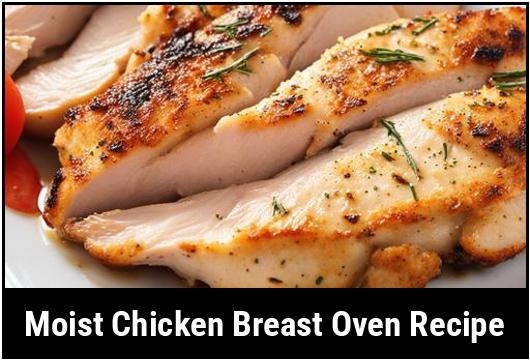
Moist Chicken Breast Oven Recipe: The Ultimate Guide
Chicken breast is a popular and versatile protein in the culinary world. It’s lean, low in fat, and has a neutral flavor that can easily be enhanced with seasoning. However, the challenge with cooking chicken breast is ensuring it remains moist and juicy after cooking. In this ultimate guide, we’ll explore the science, culinary details, selection, cleaning, preparation, tips, variations, doneness checks and a tasty recipe for a moist chicken breast in the oven.
The Science of Moist Chicken Breast
To understand how to cook moist chicken breast, we need to first understand the science behind its moisture retention. Chicken breast consists of muscle fibers and connective tissue. The muscle fibers contain water and protein, while the connective tissue is made up of collagen that breaks down during cooking, resulting in tender meat.
When cooking chicken breast, heat causes the muscle fibers to contract, releasing the water they contain. If the heat is too high or the cooking time is too long, the water molecules evaporate from the meat, leaving it dry and tough. However, with the right cooking method and a few tips, we can prevent the loss of moisture, resulting in juicy and moist chicken breast.
Culinary Details of Selecting Chicken Breast
When selecting chicken breast for cooking, there are a few things to consider. First, choose fresh chicken breast over frozen, as it will have a better texture and flavor. Look for chicken that has a consistent color and texture, with no visible bruising or discoloration.
Additionally, consider the size of the chicken breast. Larger chicken breasts tend to be tougher and require longer cooking times, increasing the risk of them drying out. Therefore, choose smaller chicken breasts that cook faster and are more tender.
Cleaning and Preparation
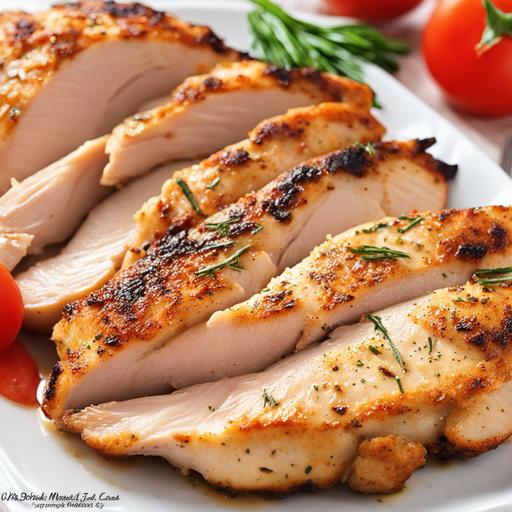
Before cooking, it’s essential to clean and prepare the chicken breast properly. Rinse the chicken breast under cold running water to remove any dirt or debris. Pat the chicken breast dry with a paper towel to remove any excess water.
Next, trim any excess fat or connective tissue from the chicken breast using a sharp knife. Leave a thin layer of fat to provide flavor and prevent the meat from sticking to the pan.
Tips for Moist Chicken Breast
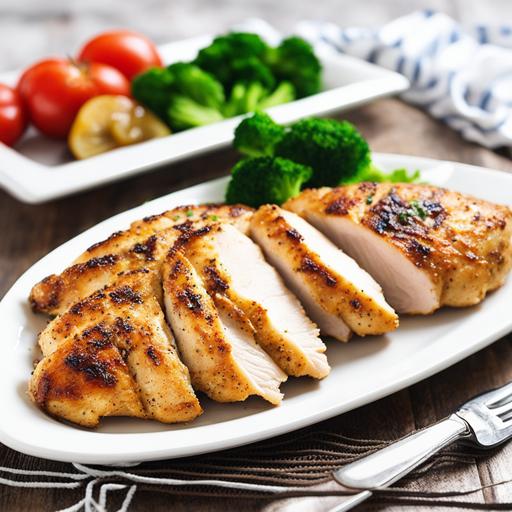
To get the most succulent and tender chicken breast possible, here are some tips to keep in mind:
Brining
Brining is a process of soaking chicken breast in a mixture of water, salt, and other seasonings before cooking. The brine helps to infuse the chicken with flavor and moisture, resulting in juicy, tender chicken breast after cooking.
Marinade
Marinating chicken breast in a mixture of herbs, spices, and acidic ingredients such as vinegar or lemon juice helps to tenderize the meat and add flavor and texture.
Temperature
Cook chicken breast at a relatively low temperature of 375°F to 400°F. High heat causes the muscle fibers to contract and lose moisture, resulting in dry chicken breast. Cooking at a low temperature allows the chicken to cook through slowly, retaining the moisture and resulting in tender meat.
Resting
After cooking chicken breast, allow it to rest for 5-10 minutes before slicing or serving. Resting allows the juices to redistribute throughout the meat, resulting in a moist, flavorful chicken breast.
Variations of Moist Chicken Breast
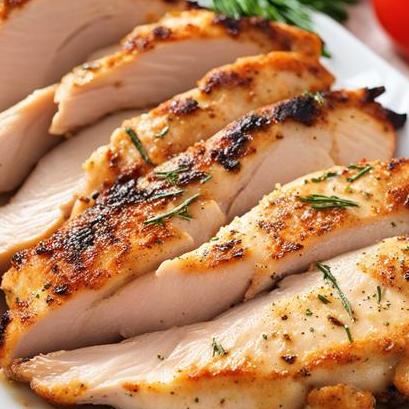
Chicken breast can be flavored in many ways to suit your taste. Here are some variations to try:
Parmesan and Herb
Mix together grated Parmesan cheese, dried thyme, rosemary, and parsley. Rub the mixture onto the chicken breast before cooking for a fragrant and flavorful meal.
Lemon Garlic
Mix together minced garlic, lemon juice, and olive oil. Marinate the chicken breast in the mixture for a few hours before cooking for a zesty and tangy meal.
BBQ
Brush chicken breast with BBQ sauce before cooking to infuse it with a sweet and smoky flavor.
Doneness Check
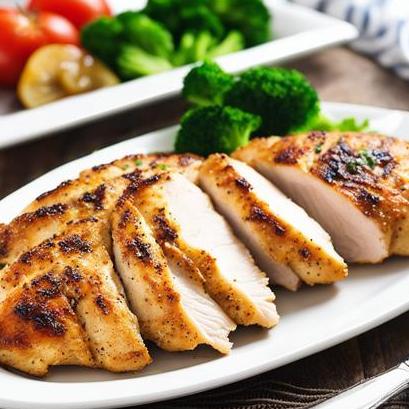
The internal temperature of chicken breast should reach 165°F to ensure it’s fully cooked. Insert a meat thermometer into the thickest part of the chicken breast to check the temperature. Alternatively, cut into the chicken with a knife and ensure the juices run clear and there’s no pink meat visible.
Recipe for Moist Chicken Breast
Here’s a simple recipe for moist chicken breast:
Ingredients:
- 4 boneless, skinless chicken breasts
- 2 tablespoons olive oil
- Salt and pepper to taste
- Optional: herbs and spices of choice
Instructions:
- Preheat the oven to 375°F.
- Rinse the chicken breast under cold running water and pat dry with a paper towel.
- Rub olive oil over each chicken breast and season with salt and pepper.
- Optional: mix together your choice of herbs and spices and rub onto the chicken breast for additional flavor.
- Place the chicken breast on a baking sheet lined with parchment paper.
- Bake for 25-30 minutes, or until the internal temperature reaches 165°F.
- Remove the chicken breast from the oven and allow it to rest for 5-10 minutes before serving.
Overcooking and Undercooking
Neither undercooking nor overcooking chicken breast is ideal. Undercooking chicken is unsafe to eat and can cause food poisoning. Overcooking chicken breast results in dry, tough meat that’s unappetizing.
To avoid undercooking chicken, always ensure it reaches an internal temperature of 165°F before consuming. To avoid overcooking, use a meat thermometer to check the internal temperature and avoid cooking for too long or at too high of a temperature.
Conclusion
Chicken breast is a versatile and healthy protein that can be cooked in many different ways. However, getting it moist and tender is essential for a delicious meal. By understanding the science behind its moisture retention, selecting the right chicken breast, and utilizing tips and tricks, you can achieve a succulent and flavorful chicken breast every time. Try out some of the variations and follow the recipe for an easy and tasty meal.
Sources
FAQS On Moist Chicken Breast Oven Recipe
How Do I Make Sure The Chicken Breast Stays Moist When Cooking It In The Oven?
To ensure moist chicken breast, start by marinating it in a mixture of oil, herbs, and spices for at least 30 minutes. Then, preheat the oven to the appropriate temperature (usually around 375°F). Place the marinated chicken breast on a baking sheet lined with parchment paper or foil, and cover it loosely with foil. This helps create a steamy environment that locks in moisture. Bake the chicken for about 25-30 minutes, or until it reaches an internal temperature of 165°F, but be careful not to overcook it. Let the chicken rest for a few minutes before slicing to retain its juices.
What Type Of Seasoning Should I Use To Enhance The Flavor Of My Chicken Breast?
You can use a variety of seasonings to enhance the flavor of your chicken breast. Some popular choices include garlic powder, onion powder, paprika, dried herbs like thyme or rosemary, or a pre-made poultry seasoning blend. Experiment with different combinations to find the flavor profile you prefer. Additionally, don’t forget to season the chicken with salt and pepper to taste before cooking.
Can I Use Boneless, Skinless Chicken Breasts For This Recipe?
Absolutely! Boneless, skinless chicken breasts are an excellent choice for this oven recipe. They cook faster and have a lower fat content compared to bone-in, skin-on chicken. Removing the skin also helps the seasonings penetrate the meat better, resulting in a more flavorful dish. However, make sure to adjust the cooking time accordingly, as boneless, skinless breasts cook slightly faster than their bone-in counterparts.
What Other Ingredients Can I Add To Make The Chicken Breast More Flavorful?
In addition to the basic seasoning, you can add a variety of ingredients to enhance the flavor of your chicken breast. For example, you can add sliced lemons or oranges on top to infuse a citrusy aroma. Fresh herbs like thyme sprigs or rosemary can be placed on top or even stuffed inside the chicken breast to add a fragrant taste. You can also experiment with adding minced garlic, diced onions, or even a splash of soy sauce or balsamic vinegar to create different flavor profiles.
How Can I Prevent The Chicken Breast From Drying Out During Cooking?
Aside from marinating and covering the chicken breast with foil, there are a few additional steps you can take to prevent it from drying out. One option is to baste the chicken breasts with the juices in the pan every 10-15 minutes. This helps in maintaining a moist exterior. Another option is to brush the chicken breasts with a little olive oil or melted butter before baking. This small amount of added fat can help lock in moisture while cooking. Just be careful not to use too much, as it may make the chicken greasy. And as mentioned earlier, monitor the internal temperature with a meat thermometer to avoid overcooking.


